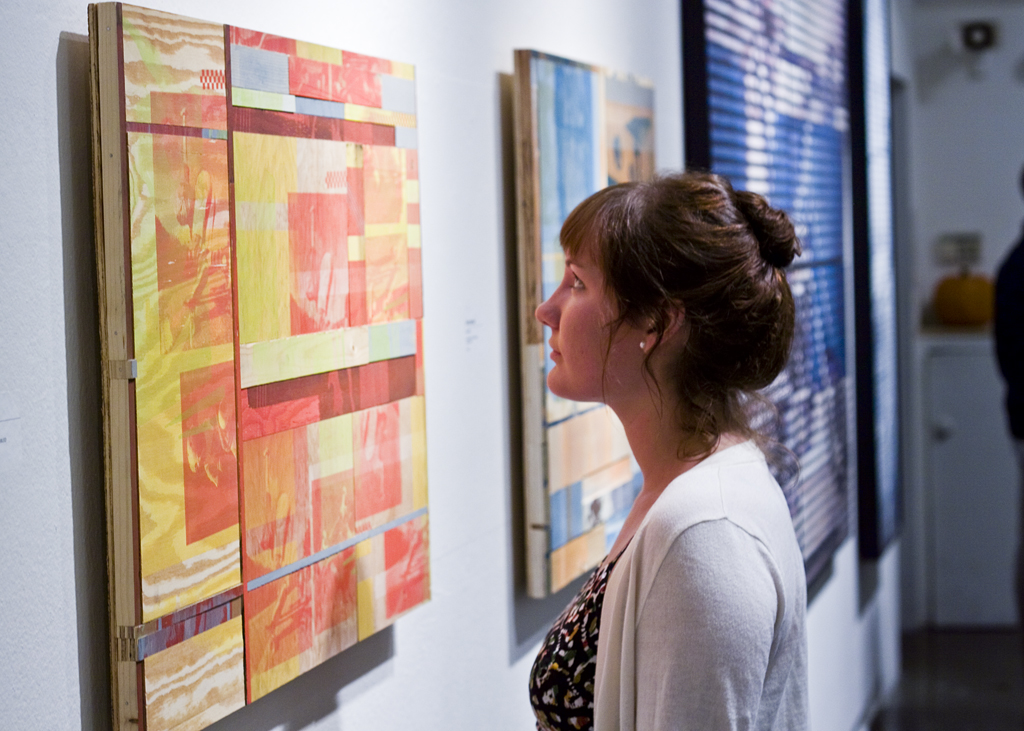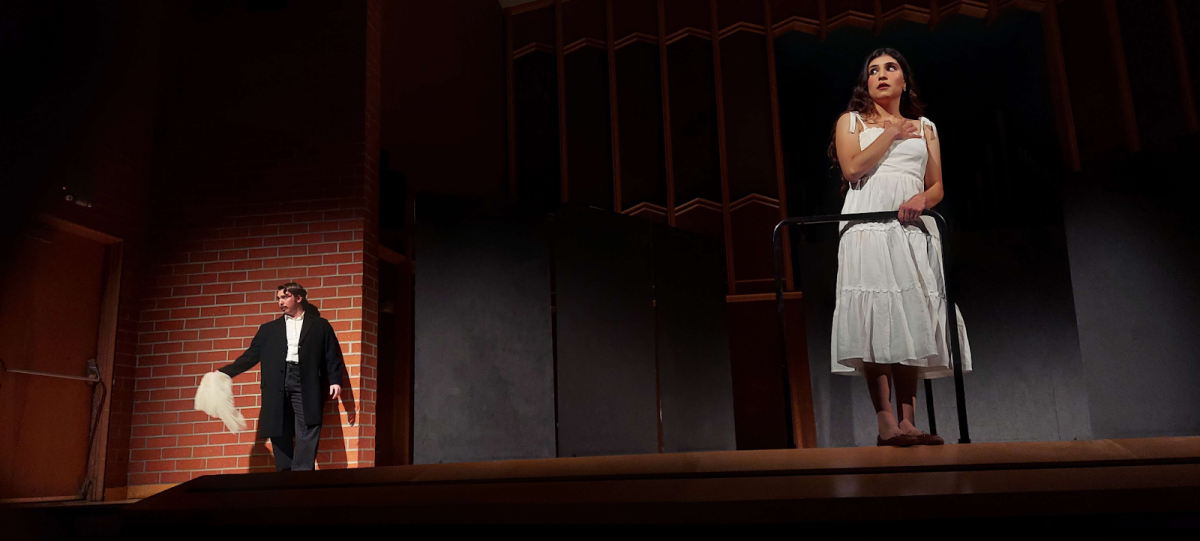Art-making is a compensatory act, said painter Daniel Finch.
In other words, art is created in order to make up for something. In many ways, to “compensate” means to long for amends to be made, and then acting upon it. This might mean the materializing of collected mental images or the reenacting of valued experiences.
It might also mean the recording and reassembling of information that, for one reason or another, is too soaked with meaning to not take form.
Childhood culture shapes show
In the current campus gallery show, “Transition,” Finch and graphic designer David Kasparek pull from the popular images of their childhood to form works that attempt to understand the cultural occurrences of their generation, Generation X.
“Gen-Xers,” ––those born anywhere from the late 60s to the late 80s––, experienced a generational aimlessness resulting from increasing divorce rates, lack of father figures and mass TV consumption, among other issues.
The role of TV characters and extreme sports
Television characters and shows played a major part in their childhood and education, and the media became a surrogate to the masses of children reaching for some sort of parental connection.
The lack of a major generational event, such as a war, fed their desire for placement and identification, which, Kasparek and Finch included, many adolescent and preadolescent males found in extreme sports.
Images function as a call
Kasparak’s compacted wooden panels are graphically screen-printed with skate magazine cutouts, images of punk bands and drawings of ramps and skate parks and camouflage prints. In their first state, these images were a subculture’s rallying cries, initiating the interested novice into a way of life. They also offered an escape from outside pressures.
When pieced together, they are calls to action that somehow lose their intended resonance, taking up a more meaningful one in their hybridization. They become the maps of a generation gifted with reconstructing their own identities with the flotsam of media icons.
Transition from culture observer to active participant
These panels act as a restoration of Kasparek’s transition from neutral culture observer to active participant in the youth subculture of extreme sports and punk music. They are documents of a past rite of passage, reinvigorated by the active immediacy of art making. At the same time, they seem to reflect an imprisonment within the time of their first creation. “FrAction#5” for example, a band of yellow shoots through the face of a punk guitarist, bars a complete access to the image in its original state.
Finch’s work similarly negotiates issues of mediation, attempting to access — for the first time or once more — a reality past. He laboriously recreates film stills and old photographs, pixel by pixel. Each dot is perhaps a mournful utterance for what has been lost. The paintings become constellations of marks mourning meteoric rise-and-fall adolescent leaders, parental surrogates and flying men-children who whisked them away to concrete never-lands.
When they appear once more on the monitor, heroes like Evil Knievel and professional BMXers only reappear as flashes of colored dots, like tiny pans ignited. At the same time, they disappear into the blank spaces between the stuttered pauses of analogue communication.
Redemption found in the midst of mourning
However, there is redemption despite the mourning. Each dot becomes a statement of restoration, a dutiful prick on the surface of memory and a redemptive act. Finch takes the poor quality analogue images and turns them into intuitive events of stunning color and patient devotion.
This devotion is out of love and even acceptance of past failures.
Though the transmission of the original images is feeble, unable to fully convey the gripping action of their subjects, their color and complexity allow Finch’s paintings to come to life once more— and this time, with greater significance.
Pieces are questioning but involved
Finch and Kasparek succeed in separating themselves from the past and remain in many ways retrospectively analytical. Their work questions the masculinity that careened across the screen, the aggression that screamed into a microphone and the skate-park hero who fades into the demagnetized distance of a moribund VHS tape. But they cannot leave their fallen heroes.
In spite of their questions, they are very much involved. They cannot deny the importance of the ramps and bowls that embraced them during teenage disillusionment, becoming the fields in which they received initiative battle wounds and marks of transition.
They respectfully inspect and work out both the positive and negative aspects of their generation, seeing that amends must be made.







